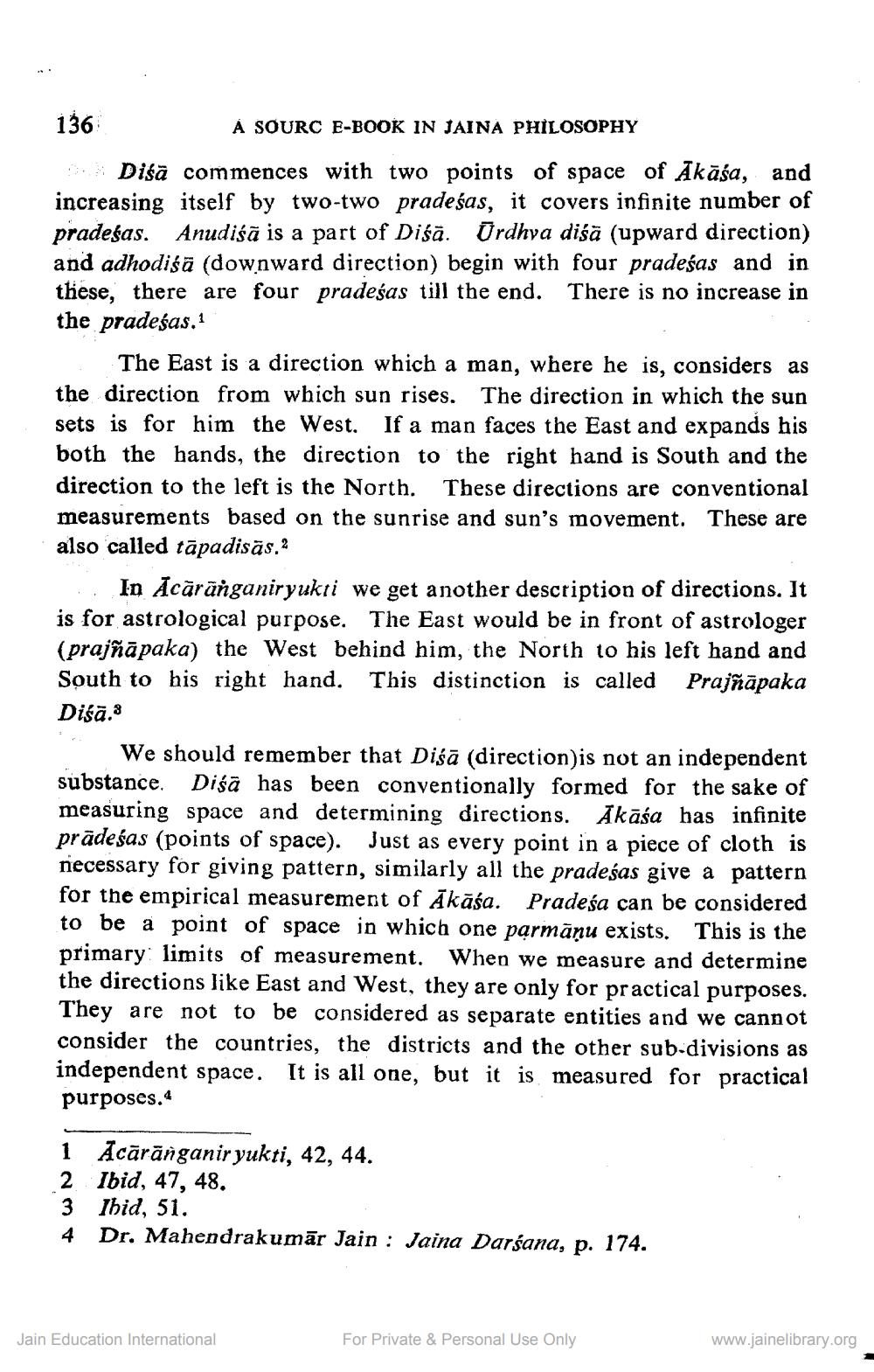________________
136
A SOURC E-BOOK IN JAINA PHILOSOPHY
Doh Diśā commences with two points of space of Akāśa, and increasing itself by two-two pradesas, it covers infinite number of pradesas. Anudiśā is a part of Disā. Ūrdhva diśā (upward direction) and adhodiśā (downward direction) begin with four pradeśas and in these, there are four pradeśas till the end. There is no increase in the pradesas.1
The East is a direction which a man, where he is, considers as the direction from which sun rises. The direction in which the sun sets is for him the West. If a man faces the East and expands his both the hands, the direction to the right hand is South and the direction to the left is the North. These directions are conventional measurements based on the sunrise and sun's movement. These are also called tāpadisās.2
In Acaranganiryukti we get another description of directions. It is for astrological purpose. The East would be in front of astrologer (prajñāpaka) the West behind him, the North to his left hand and South to his right hand. This distinction is called
Prajñāpaka
Disā.3
We should remember that Diśā (direction) is not an independent substance. Disa has been conventionally formed for the sake of measuring space and determining directions. Akāśa has infinite pradeśas (points of space). Just as every point in a piece of cloth is necessary for giving pattern, similarly all the pradeśas give a pattern for the empirical measurement of Akāśa. Pradeśa can be considered to be a point of space in which one parmāņu exists. This is the primary limits of measurement. When we measure and determine the directions like East and West, they are only for practical purposes. They are not to be considered as separate entities and we cannot consider the countries, the districts and the other sub-divisions as independent space. It is all one, but it is measured for practical
purposes.
1 Acaranganir yukti, 42, 44.
2 Ibid, 47, 48.
3 Ibid, 51.
4
Dr. Mahendrakumar Jain: Jaina Darsana, p. 174.
Jain Education International
For Private & Personal Use Only
www.jainelibrary.org




